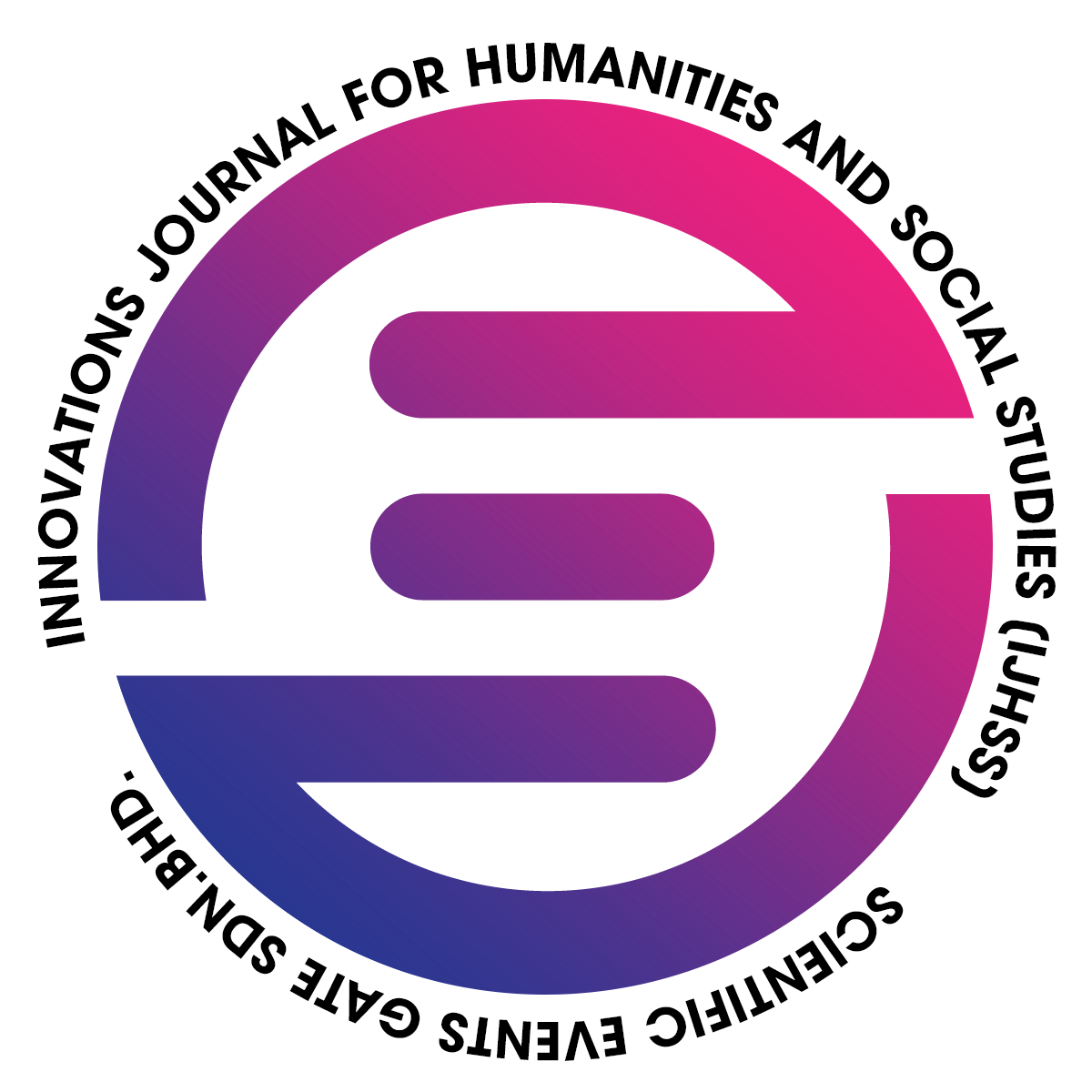The role of systematic functional linguistics in establishing evaluation theory and its application in computing sentiment and opinion analysis
DOI:
https://doi.org/10.61856/jr1pef16Keywords:
Systemic Functional Linguistics, Interpersonal Function, Appraisal Theory, Affect System, Computational SystemsAbstract
This research paper aims to shed light on the foundations of Systemic Functional Linguistics (SFL), which stems from the functional linguistic theory developed by linguist Michael Halliday. Halliday viewed language as a vital and powerful tool that serves various social purposes. Language, according to his approach, can be analyzed through its social and communicative functions across three main levels: the experiential, the textual, and the interpersonal functions. Each of these serves as a key to understanding how language is employed to construct multiple meanings. This paper further explores the role of Systemic Functional Linguistics, especially through the interpersonal function, in the emergence of a new theory that expands the scope of the interpersonal function within SFL. Developed by Jim Martin and Peter White, this theory, known as Appraisal Theory, aims to understand and delineate how language conveys emotional values and judgments. Appraisal Theory is based on three primary systems: Affect, which focuses on how individuals express their feelings and attitudes; Appreciation, which is dedicated to evaluating objects and events; and Judgment, which centers on assessing people’s behaviors. The paper also highlights the significant impact of Appraisal Theory across various fields of knowledge, particularly in the field of Natural Language Processing (NLP), which has leveraged the Affect system to develop computational models capable of analyzing and automatically evaluating opinions and sentiments. Additionally, it points to some Arabic-language research efforts that have relied on Appraisal Theory to enhance the role of Arabic in expressing deep opinions and sentiments through computational systems that assist in evaluating such opinions and sentiments written in Arabic
References
Ahmed Amar & Abdelmonaime Lachkar. (2015). Vers la Construction d’un Lexique d’Appraisal en Langue Arabe pour l’Analyse des Sentiments dans les Réseaux Sociaux. Vers la Construction d’un Lexique d’Appraisal en Langue Arabe pour l’Analyse des Sentiments dans les Réseaux Sociaux. Ressources langagières de l’arabe pour le TAL : construction, standardisation, gestion et exploitation, Institut d’Etudes et de Recherches pour l’Arabisation, Rabat.
Almurashi, W. (2016). An Introduction to Halliday’s Systemic Functional Linguistics. Journal for the Study of English Linguistics, 4, 70. https://doi.org/10.5296/jsel.v4i1.9423
Bavali, M., & Sadighi, F. (2008). Chomsky’s Universal Grammar and Halliday’s Systemic Functional Linguistics : An Appraisal and a Compromise. Journal of Pan-Pacific Association of Applied Linguistics, 12(1), 11‑28.
Butler, C. S. (2013). Systemic Functional Linguistics, Cognitive Linguistics and psycholinguistics : Opportunities for dialogue. Functions of Language, 20(2), 185‑218. https://doi.org/10.1075/fol.20.2.03but
Dictionary.com | Meanings & Definitions of English Words. (2024, novembre 14). Dictionary.Com. https://www.dictionary.com/browse/appraisal
Ebbelind, A. (2015). Systemic Functional Linguistics as a methodological tool when researching Patterns of Participation. In K. Krainer & N. Vondrová (Éds.), CERME 9—Ninth Congress of the European Society for Research in Mathematics Education (p. 3185‑3191). Charles University in Prague, Faculty of Education and ERME. https://hal.science/hal-01289854
Ebbelind, A., & Segerby, C. (2015). Systemic functional linguistics as a methodological tool in mathematics education research. Nordisk Matematikkdidaktikk, NOMAD: [Nordic Studies in Mathematics Education], 20(1), 33‑54.
Garcia, A. V. (2019). Sentiment analysis-based methods for cultural monuments [Http://purl.org/dc/dcmitype/Text, Universidad de Granada]. https://documat.unirioja.es/servlet/tesis?codigo=216394
Halliday, M. A. K., & Matthiessen, C. M. I. M. (2004). An introduction to functional grammar (3rd ed). Arnold ; Distributed in the United States of America by Oxford University Press.
Halliday, M., & Matthiessen, C. (1999). Construing Experience Through Meaning : A Language Based Approach to Cognition.
Helliwell, T., & Ebbelind, A. (2024). Combining enactivism and systemic functional linguistics : A methodology for examining (mathematics teacher educator) language. Journal of Mathematics Teacher Education. https://doi.org/10.1007/s10857-024-09619-5
Lim, F. V. (2021). Investigating intersemiosis : A systemic functional multimodal discourse analysis of the relationship between language and gesture in classroom discourse. Visual Communication, 20(1), 34‑58. https://doi.org/10.1177/1470357218820695
Martin, J. R., & White, P. R. R. (2005). The language of evaluation : Appraisal in English. Palgrave Macmillan.
Martin, J., & White, P. (2005). The Language of Evaluation : Appraisal in English. Palgrave Macmillan UK. https://doi.org/10.1057/9780230511910
Matthiessen, C. M. I. M. (2013). Applying systemic functional linguistics in healthcare contexts. Text & Talk, 33(4‑5), 437‑466. https://doi.org/10.1515/text-2013-0021
Nugier, A. (2009). Histoire et grands courants de recherche sur les émotions (4). 4, Article 4.
Philippot, P. (2004). Facteurs cognitifs et réactions corporefles dans le processus émotionnel (p. 37‑56). https://doi.org/10.14195/978-989-26-0805-1_2
Santiago Schwarz, V., & Hamman-Ortiz, L. (2020). Systemic functional linguistics, teacher education, and writing outcomes for U.S. elementary English learners : A review of the literature. Journal of Second Language Writing, 49, 100727. https://doi.org/10.1016/j.jslw.2020.100727
Charles Dārwīn. (2010). al-taʻbīr ʻani al-ʻawāṭif ʻinda al-insān wa-al-ḥayawānāt (tarjamat al-Shaykh Muḥammad ʻAbd al-Sattār. ; al-Ṭabʻah al-ūlá). al-Munaẓẓamah al-ʻArabīyah lil-Tarjamah.
Thjyl madhwr, (2019). al-naẓarīyah al-waẓīfīyah fī al-Baḥth al-lisānī wa-uṣūluhā al-maʻrifīyah. Majallat Buḥūth al-Sharq al-Awsaṭ, 4 (50), 227 ‑ 268. https://doi.org/10.21608/mercj.2019.52675
Ḥabībī, Ibrāhīm. (2024). al-fahm al-Ālī lil-lughah al-ʻArabīyah taḥlīl al-ārāʼ wa-al-mashāʻir namūdhajan (al-ūlá). Iṣdārāt minaṣṣat urīdu al-ʻIlmīyah.
Ḥabībī, Ibrāhīm., wāljyhād, ʻAbd al-Ḥamīd, (2019). Wasm Muʻjam ʻArabī li-taḥlīl al-ārāʼ wa-al-mashāʻir. Majallat al-lisān al-ʻArabī, al-tasalsul ‑ 335-364.
Ḥabībī, A., wāljyhād, ʻA. A. (2020). bināʼ Mawārid asāsīyah li-taḥlīl al-ārāʼ wa-al-mashāʻir al-wāridah fī al-Taʻlīqāt bi-al-lughah al-ʻArabīyah. Journal of Engineering and Computer Science (JECS), 21(2), Article 2.
Ḥamad almnyzl, t. (2020). alwẓyfyyh ʻinda hālydāy : dirāsah taḥlīlīyah. International Journal for Arabic Linguistics and Literature Studies, 2(1), 22‑32. https://doi.org/10.31559/JALLS2020.2.1.3
ʻAbābinah Yaḥyá. (2008). ʻilm al-lughah al-muʻāṣir : muqaddimāt wa-taṭbīqāt. Maktabat al-Manhal al-raqmīyah.
Kafāfī ʻAlāʼ al-Dīn wjābr ʻAbd al-Ḥamīd. (1988). Muʻjam ʻilm al-nafs wa-al-ṭibb al-nafsī (D. Ṭ). Dār al-Nahḍah al-ʻArabīyah lil-Nashr wa-al-Tawzīʻ.
Downloads
Published
Issue
Section

This work is licensed under a Creative Commons Attribution 4.0 International License.






